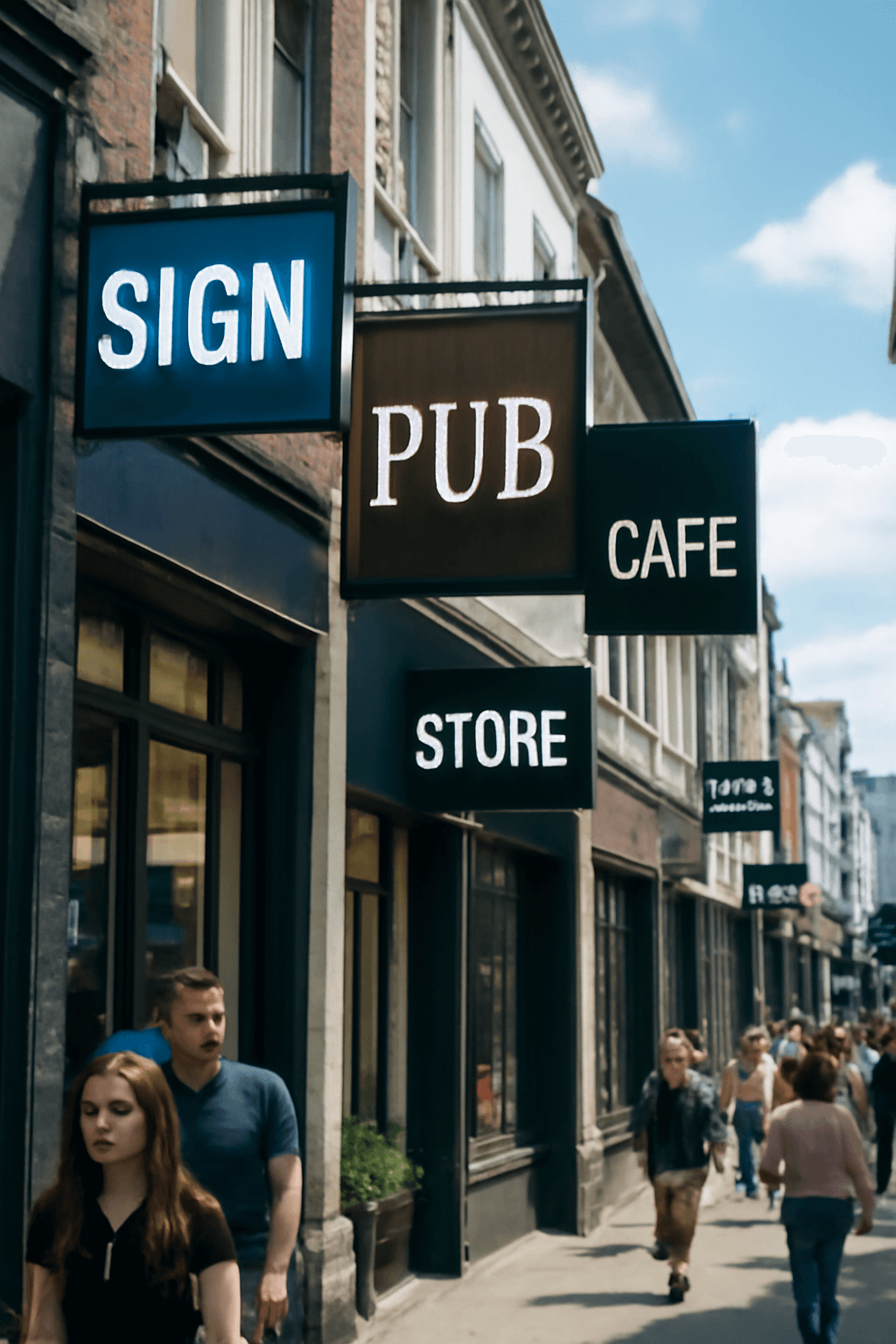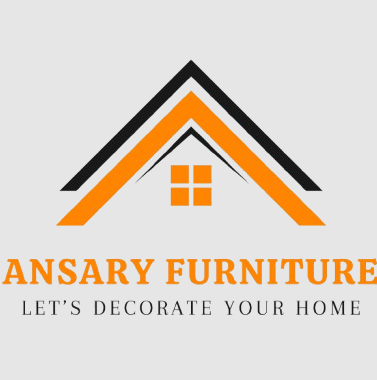A projecting sign is a type of business signage mounted perpendicular to a wall, extending outward so it can be viewed from both sides. Unlike traditional fascia or flat wall signs that are only visible head-on, projecting signs catch attention from people walking along the street in either direction. This unique positioning makes them especially effective in urban areas with heavy pedestrian traffic, where storefront visibility can make or break first impressions.
Often called hanging signs, bracket signs, or swinging boards, these displays come in a variety of shapes, sizes, and finishes. They have been a staple for centuries—think of old tavern signs in Europe—but modern materials and lighting options have turned them into powerful branding tools for businesses today.
Why Businesses Use Projecting Signs
Businesses choose projecting signs because of their unmatched visibility. When someone is walking past a row of shops, wall-mounted signs often blend together. A projecting sign juts out, naturally drawing the eye and signaling presence from a distance.
The benefits extend beyond visibility:
- They create a strong brand impression through unique design.
- Double-sided panels allow for consistent exposure on busy streets.
- They enhance wayfinding, guiding potential customers directly to the entrance.
For small businesses, especially in competitive areas, the right projecting sign can act as a silent salesperson, increasing walk-ins without additional marketing spend.
Types of Projecting Signs
Projecting signs come in different styles, each catering to specific needs:
- Illuminated Projecting Signs
These use LED lighting or fluorescent tubes to ensure visibility during both day and night. Ideal for bars, restaurants, and retail outlets that operate after dark. - Non-Illuminated Signs
Classic and cost-effective, these work well in daylight-heavy environments. They are often chosen by boutique shops and service providers who prioritize design aesthetics over lighting. - Double-Sided Projecting Signs
The most common format, ensuring visibility from both directions of pedestrian flow. Perfect for high-traffic areas like high streets and shopping districts. - Traditional Hanging Boards
Think of vintage-style wooden signs hanging from decorative iron brackets, often used by pubs, cafés, or artisan shops. They blend old-world charm with branding appeal. - Digital Projecting Signs
A modern evolution featuring screens that display dynamic content such as promotions, menus, or animated logos. They allow businesses to change messaging quickly without physical reprints.
Materials and Design Options
The choice of material influences both durability and branding:
- Wood offers a rustic, traditional look, often chosen by independent cafés, pubs, or artisan stores.
- Acrylic provides a sleek and modern finish with smooth surfaces, suitable for bold graphics.
- Aluminum and Steel ensure longevity and weather resistance, making them popular for outdoor urban installations.
- PVC Foamex is lightweight yet durable, a cost-effective option for startups or temporary signage.
Lighting options, especially LED integration, elevate visibility and energy efficiency. Businesses should also consider typography and color psychology. Bold, legible fonts paired with brand-aligned colors ensure the sign communicates clearly even from a distance.
Installation, Safety, and Regulations
Proper installation is crucial for safety and compliance. Signs are usually mounted with steel or aluminum brackets designed to bear the weight and withstand wind pressure. Incorrect installation can lead to hazards, especially in crowded pedestrian zones.
Local councils or city authorities often regulate signage size, placement, and illumination. For instance, in the UK, projecting signs on listed buildings may require planning permission. In the US, ADA (Americans with Disabilities Act) guidelines may dictate height clearance to ensure accessibility.
Working with experienced signage companies helps businesses navigate regulations and ensures that installations meet health and safety standards.
Benefits of Projecting Signs for Different Industries
Projecting signs adapt well across industries:
- Retail Shops: Clothing stores and boutiques use them to stand out in crowded shopping districts.
- Cafés and Restaurants: Hanging boards or illuminated signs attract hungry passersby with instant brand recognition.
- Corporate Offices and Agencies: Professional projecting signs add credibility and guide clients to the right entrance.
- Hospitality Venues: Pubs, hotels, and clubs often rely on decorative signs that mix tradition with modern branding.
By tailoring design and material to their sector, businesses can achieve both functional and aesthetic advantages.
Cost Factors and ROI of Projecting Signs
The cost of a projecting sign depends on several factors:
- Material choice and size
- Design complexity
- Lighting integration (LEDs or digital screens)
- Installation and maintenance
While initial costs may range from a few hundred to several thousand dollars, the return on investment is often significant. Unlike digital advertising that disappears once budgets run out, a projecting sign provides 24/7 visibility for years, making it a cost-effective brand asset.
Choosing the Right Signage Partner
Finding the right supplier or installation partner is as important as the sign design itself. A good signage partner should:
- Offer custom design solutions that align with your brand identity
- Have experience with local regulatory compliance
- Provide case studies or examples of successful installations
- Deliver aftercare and maintenance services
For instance, a boutique fashion store in London partnered with a signage company specializing in illuminated acrylic signs. After installation, the store reported a 30% increase in footfall within three months—demonstrating how a well-designed projecting sign can directly impact business performance.
FAQs
1. Are projecting signs weather-resistant?
Yes, when made from durable materials like aluminum, steel, or treated wood, projecting signs are designed to withstand outdoor conditions.
2. Do I need planning permission for a projecting sign?
In many cities, yes. Local councils or zoning authorities often regulate sign size, lighting, and placement. Always check before installation.
3. Can projecting signs be illuminated?
Absolutely. LED-lit projecting signs are popular for businesses that operate during evening hours.
4. How long do projecting signs last?
Depending on materials and maintenance, signs can last anywhere from 5 to 15 years. LED lighting also has long lifespans and low maintenance costs.
5. Are digital projecting signs worth it?
They are ideal for businesses wanting to display changing promotions, menus, or animated logos, though they come at a higher upfront cost.
6. Can projecting signs be double-sided?
Yes, most are double-sided to maximize visibility for foot traffic approaching from both directions.
7. What is the average cost of a projecting sign?
Prices vary widely, but small non-illuminated options may cost a few hundred dollars, while large illuminated or digital signs can reach several thousand.



